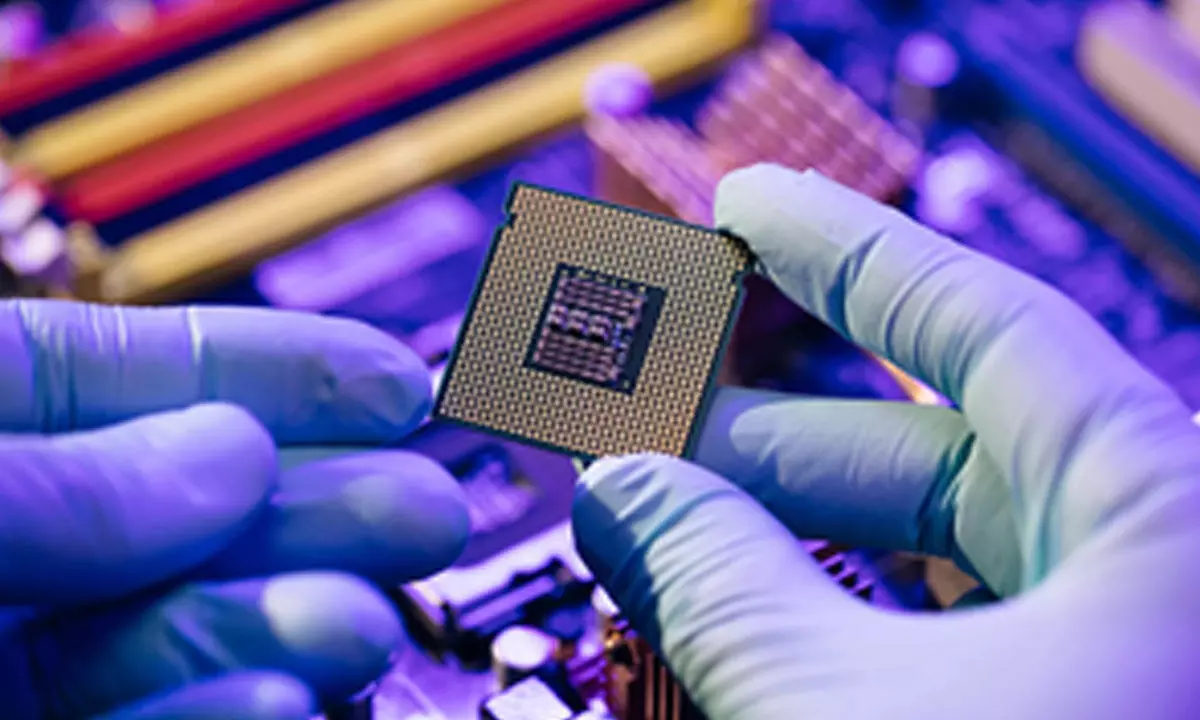In a breakthrough that could have far-reaching implications for the semiconductor industry, researchers at Bengaluru’s Jawaharlal Nehru Centre for Advanced Scientific Research (JNCASR) have observed a rare electron localization phenomenon. This discovery has the potential to significantly expand the range of materials suitable for semiconductor production, opening up new possibilities for improved performance and expanded applications in various fields, including electronics, telecommunications, and renewable energy.
Unveiling the Phenomenon and its Significance
The team, led by Associate Professor Bivas Saha, meticulously investigated how single-crystalline, highly compensated semiconductors undergo a metal-insulator transition, using single crystalline scandium nitride as a model system. This transition is marked by an astonishing nine orders of magnitude change in resistivity, providing valuable insights into the intricate electron localization behavior in these materials. The implications of this discovery are profound, as it could lead to a broader selection of materials for semiconductor manufacturing, potentially resulting in improved performance of existing semiconductor devices or expanding their applications in areas such as lasers, optical modulators, and photoconductors.
Delving into the Science
The JNCASR team employed oxygen and magnesium as random dopants to showcase a “quasi-classical Anderson transition” that creates fluctuation of potential (electrical potential). This fluctuation leads to the formation of bubbles of electrons within a dielectric matrix, causing a band structural change in the parent material. This phenomenon is known as the percolative metal-insulator transition, wherein the structure remains unchanged, but electronically, a transition occurs. This transition is not merely an academic curiosity but holds immense practical potential, as it could enable the manipulation of material properties at a fundamental level, leading to the development of novel semiconductor devices with enhanced functionalities.
Anderson Localization: A Key to Unlocking New Possibilities
Anderson localization, a broad wave phenomenon that impacts the transport of various waves, including electromagnetic waves, acoustic waves, quantum waves, spin waves, etc., plays a crucial role in this discovery. The potential fluctuation arising from the random distribution of dopants increases the resistivity of the semiconductor by localizing the carriers. Electron transport in such localized systems happens through a percolation process, which is uncommon in semiconductors. This unique behavior leads to different physics governing the electrical transport and properties like mobility, photoconductivity, and thermopower in these materials, opening up new avenues for research and development.
Potential Applications and a Promising Future
Dr. Dheemahi Rao, the lead author of the research paper, highlighted that such an electronic transition in single-crystalline and epitaxial semiconductors could pave the way for their use in various applications, including but not limited to lasers, optical modulators, photoconductors, spintronic devices, and photorefractive dynamic holographic media. The ability to control potential fluctuations could serve as a novel tool to modify semiconducting properties in materials, potentially resulting in more efficient semiconductors across various fields of study. This discovery could usher in a new era of semiconductor technology, with advancements in fields such as artificial intelligence, quantum computing, and high-performance computing on the horizon.
The groundbreaking discovery by Indian scientists at JNCASR represents a significant step forward in our understanding of electron localization and its implications for semiconductor technology. The potential to expand the range of suitable materials, coupled with the ability to manipulate material properties at a fundamental level, could lead to the development of more efficient, versatile, and powerful semiconductor devices, paving the way for a brighter and more technologically advanced future.













